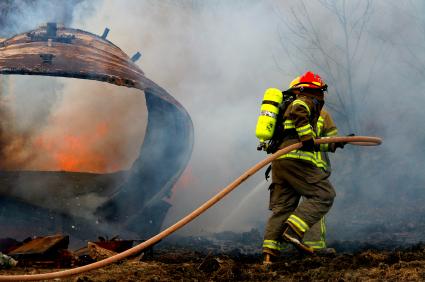 Considered the worst fire in Colorado state history, the Waldo Canyon Fire ignited June 23, 2012, near Colorado Springs, Colo.
Considered the worst fire in Colorado state history, the Waldo Canyon Fire ignited June 23, 2012, near Colorado Springs, Colo.
It forced more than 30,000 people to flee their homes, destroyed 346 homes, scorched 18,247 acres, killed two residents and took firefighters 18 days to fully contain.
The fire presented the first opportunity for partners in the national Fire Adapted Communities coalition to collectively evaluate the performance of mitigation practices in Colorado Springs in a post-fire environment and to compare the results to the mitigation strategy recommended by the Fire Adapted Communities program.
A report analyzing these efforts was prepared by the Fire Adapted Communities Mitigation Assessment Team, which included experts in building science, forestry, social science and wildfire public education from the USDA Forest Service, the Institute for Business and Home safety, the International Association of Fire Chiefs, the National Fire Protection Association and The Nature Conservancy. The team worked closely with the Colorado Springs Fire Marshal’s Wildfire Mitigation Section and the Colorado State Forest Service.
“IBHS is proud to be a member of the member of the Fire Adapted Communities Coalition, which sponsored this report. As a FAC member, IBHS is committed to helping people and communities in the wildland/urban interface adapt to living with wildfire and reduce their risk for damage, without compromising firefighter or civilian safety,” Julie Rochman, CEO and president of the IBHS, said in a statement.
The fire burned through brush, mountain shrub, grass, and trees including oak, Pinyon-juniper, ponderosa pine, Douglas-fir, spruce and limber pine. In addition to disrupting thousands of lives and destroying hundreds of properties, the wildfire left the scarred landscapes vulnerable to flooding and/or debris slides that will pose long-term problems in this area.
“Property insurers are extremely concerned about wildfire, particularly with drought conditions around the country predicted to continue for many years,” Rochman said. “The useful post-disaster field research findings in the new Waldo Canyon report will provide critical insights for property owners. These findings also will inform future wildfire research, such as that conducted by scientists at the IBHS Research Center, the only facility in the world that can recreate a full-scale wildfire ember storm in a controlled environment.”
Major findings in “Lessons from Waldo Canyon” include:
• Fire spreading from home-to-home was again a major issue, as has been the case in previous wildfires, which caused a relatively large number of home losses.
• While it is important to harden a building with noncombustible materials to make it more resistant to wildfire, it also is necessary to incorporate appropriate construction details.
• Community leaders must recognize the value of community-wide collaboration, which is an essential component to home survival and to the creation of fire adapted communities.
• The community tax base is significantly impacted by the widespread damage and destruction of homes and businesses during wildfires. This has economic consequences for all residents.
• The preparedness message is most effective when delivered by numerous parties. Public policymakers, other officials, local community and business leaders should echo the best practices provided by the Fire Adapted Communities Coalition to reinforce the need for wildfire property protection efforts at every level.
The Forest Service developed the Fire Adapted Communities program in 2009, as the best alternative to escalating wildfires. The strategy promotes multi-jurisdictional use of a suite of mitigation tools focused on helping communities live successfully with wildfire through mitigation and preparation, rather than depending upon suppression and protection resources that are not always available.
The elements of a Fire Adapted Community include:
• An informed and active community that shares responsibility for mitigation practices.
• A collaboratively developed and implemented Community Wildfire Protection Plan.
• Structures hardened to fire and including adequate defensible space practices; advocated by Firewise Communities, IBHS and others.
• Local response organizations with the capability to help the community prepare and can respond to wildfire; advocated by Ready, Set, Go!
• Local response organizations with up-to-date agreements with other stakeholders who play a role in mitigation and response.
• WUI Codes, Standards or Ordinances, where appropriate, which guide development.
• A visible wildfire reduction and prevention program that educates the public about the importance of a communitywide approach and the role of individual homeowners.
• Adequate fuels treatments conducted in and near the community, including development and maintenance of a fuels buffer around the community.
• Established and well-known evacuation procedures and routes.












